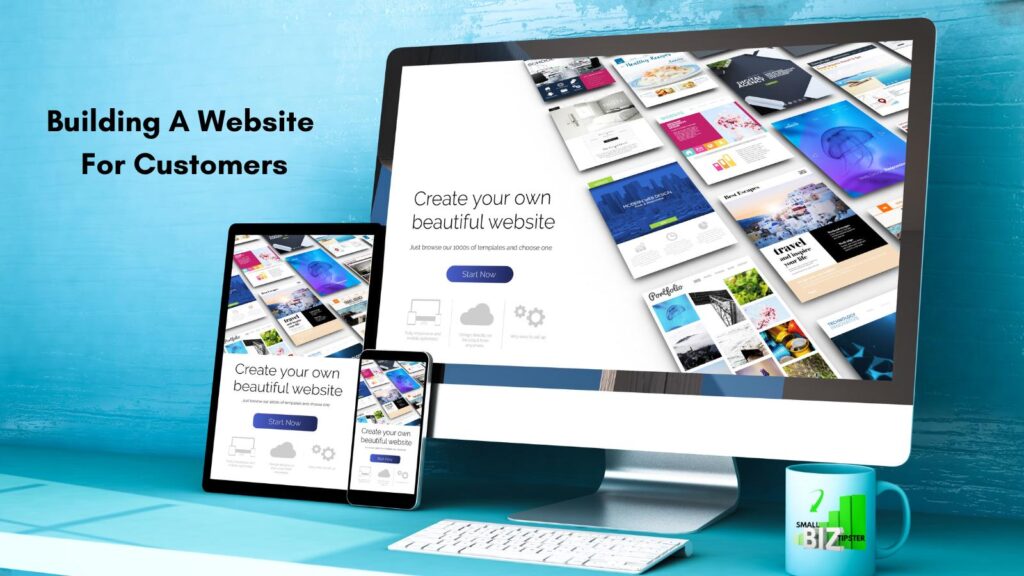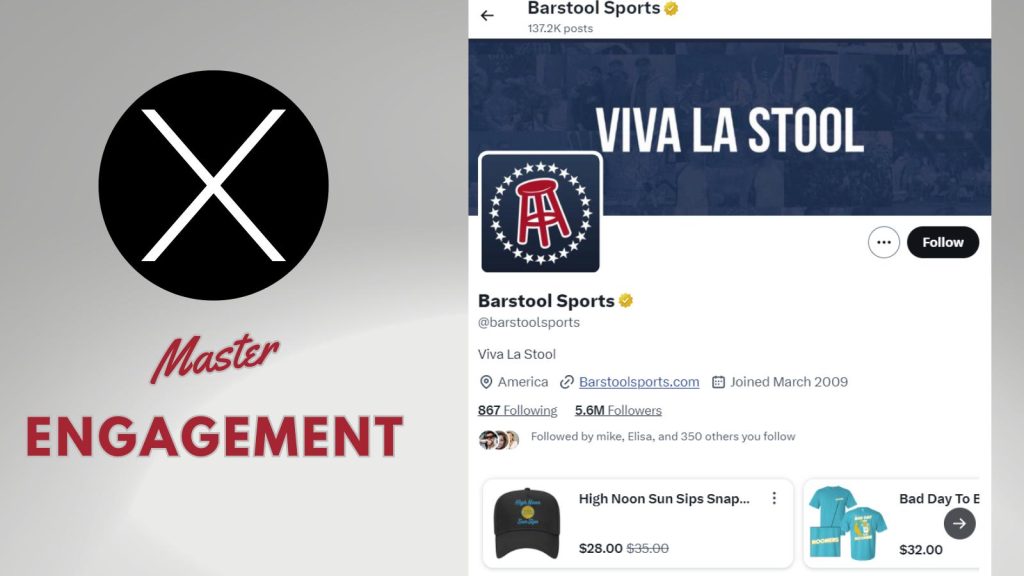When you are building a website for customers, especially when building a website for customers, you want to make sure that you will be happy with it—otherwise, you might struggle to see its point.
Building a website is more than just a technical endeavor; it’s about creating a space where customers feel welcomed, informed, and valued. In 2026, a website must engage users and deliver exceptional experiences tailored to their needs.
Table of Contents
Key Takeaways
- A customer-focused website in 2026 needs a straightforward navigation, fast load times, a mobile-friendly design, and simple paths to key actions.
- Strong content, including FAQs, blogs, and helpful guides, answers customer questions, builds trust, and supports SEO at the same time.
- Ongoing quality control, such as fixing broken links, testing forms, and updating old content, keeps the site reliable and user-friendly.
- Keyword research and on-page optimization help the right customers find your site and improve conversions from search traffic.
- Building a website for customers in 2026 can cost from $500 to over $10,000, depending on site size, design needs, and e-commerce features.
Plan Customer Journeys
Building a website for customers to love is not an easy task. Consider their journeys. What questions do they have?
What solutions are they seeking? Addressing these questions can significantly enhance user satisfaction.
For example, if your site sells outdoor gear, include guides on choosing the best equipment for different activities.
Additionally, utilizing customer testimonials can build trust. Showcase feedback from satisfied customers to enhance credibility and attract new visitors. Visual elements, such as images or videos of products in use, can also help potential customers envision themselves using your offerings.
Conducting competitor analysis when building a website for customers can enhance your strategy. There are quite a few things that you can do to ensure that building a website is as good as possible and that your customers will benefit from it financially.
Staying updated with trends when building a website for customers keeps their website fresh and relevant.
Choose the Right Website Type
Understanding costs when building a website for customers helps in budgeting effectively.
E-commerce websites should integrate features like product comparisons, user reviews, and detailed product descriptions. For instance, a fashion retailer might include sizing guides and fabric explanations to help customers make informed decisions.
Ecommerce Checklist:
- Secure checkout
- Reviews
- Product filters
- Size Guides
- Return policies
Blogs are not only platforms for sharing insights but also serve as valuable tools for SEO. Regularly updated content can help your site rank higher in search engine results.
Consider topics that resonate with your audience, such as ‘Top 10 Tips for Maintaining Your Lawn’ for a landscaping business.
Building A Website for Customers with Portfolio Websites
For portfolio websites, showcasing a range of work with detailed descriptions can attract potential clients. Include case studies explaining the problem, solution, and results. This approach highlights your skills and demonstrates your ability to deliver value.
When building a business website, ensure it communicates your unique selling proposition. What sets you apart from competitors? Use your website to tell your story, share your mission, and illustrate how you can better serve your customers.
Understanding your target audience is crucial. Conduct surveys or analyze website analytics to gather user demographics and behavior data.
This information can inform your design choices, content strategy, and marketing efforts.
Use Tools For Building A website for Customers
Utilize tools like Google Keyword Planner to identify relevant keywords your potential customers are searching for. Incorporating these keywords naturally throughout your content can enhance your website’s visibility and attract the right audience.
Consider the importance of long-tail keywords. These phrases are more specific and often indicate a customer’s intent to purchase. For example, instead of targeting ‘running shoes,’ try ‘best running shoes for flat feet.’
Updating old content regularly can also bolster SEO. Refreshing blog posts with new insights, statistics, or examples keeps your site relevant and can boost its ranking in search results.
So, let’s examine what you can do to improve your website for customers as much as possible. The following might be really important to consider.
Websites Quality Control
Quality control extends beyond just content. Regularly check for broken links, ensure images load correctly, and verify that forms work as intended. These small details can significantly affect user experience.
Engaging in A/B testing can provide valuable feedback on what elements of your website resonate with users. Experiment with headlines, button colors, or layouts to see what drives conversions.
Customer support options on your website, such as live chat or easy-to-find contact forms, can enhance user satisfaction. Customers appreciate quick responses to their inquiries and concerns.
There are many types of websites designed to meet customers’ needs. An e-commerce website lets customers buy products or services online.
FAQS To Answer Popular Questions
Consider creating a dedicated FAQ section to address common inquiries proactively. This will not only save time for your customers but also help improve your site’s SEO.
Incorporating multimedia content can also enhance user engagement. Videos, infographics, and podcasts can dynamically present information, catering to different learning styles and preferences.
Blogs for Websites
Blogs provide information and insights on various topics, from cooking to tech. Portfolio websites showcase the work of artists, designers, and other creatives.
Remember to optimize images by compressing them without sacrificing quality. Large images can slow down your website, negatively impacting user experience.
Accessibility should also be a priority. Ensure your website is navigable for users with disabilities by following guidelines such as using alt text for images and ensuring adequate contrast ratios.
Competitor Analysis before Building a website for customers
Conduct competitor analysis to understand how your site compares to others in your niche. Identify what works for them and adapt those strategies to your website to gain a competitive edge.
As technology evolves, stay updated with the latest web design trends. Keeping your website modern and fresh can attract more visitors and keep them engaged.
By 2027, expect more AI-driven tools to be integrated, streamlining your website-building process. These tools can assist in everything from layout design to content creation.
Business-style websites offer details about a company’s services and contact information, while news websites keep readers updated on the latest news.
Each type of website serves a distinct purpose, making it easier for users to find what they need. Before building a website, you must first know which type you need.
Use Keyword Research for Customer Needs
First and foremost, conducting keyword research is a good idea to ensure you know how your website will improve for its customers.
- Brainstorm topics
- Use a tool
- Review search intent
- Pick primary and secondary keywords per page
Essentially, you want to get an idea of what people are searching for so that you can effectively ensure that your site provides that.
Consider offering personalized experiences on your website, such as product recommendations based on user behavior. This tailored approach can increase conversion rates and customer loyalty.
Utilizing retargeting strategies can remind previous visitors about your offerings. By strategically displaying ads to these users, you can encourage them to return and complete a purchase.
If you can do this right, you are much more likely to have a website that people find helpful and draws them in.

Improve Quality Control
Generally, you will want to create a website that has the quality of the website as good as it can be. However, there are a lot of ways that you can do that.
- Checks for links
- Forms
- Mobile layout
- Accessibility
- Speed
- Security
One particularly important and useful consideration is to use some kind of quality control procedure, which is going to be a great way to ensure that you are actually keeping your website doing what it’s meant to be doing.
Using a Website QA Tool is a great way to ensure this, so it’s something to consider.
Provide The Right Information
Usually, what your customers want from your site is to be given the right information—the stuff they are actually looking for. If you can provide that, then you’ll find that you are much more likely to have a good sense of what you are giving them and why.
This can help with customer relations more generally, so it’s a good idea to ensure that you provide customers with the information they are looking for as best you can.
Optimize While Building A Website For Customers
There are many ways to optimize a website to improve the customer experience.
So this is something that you will want to aim for if you are keen on building a website for customers as well as possible.
Optimize it for SEO, and you should find that you can improve the customer experience considerably.
While you optimize and build a website for customers, be sure to check its speed. Customers don’t want to wait for information or order a product from your new website.
How Much Does It Cost For A Website In 2026?
In 2026, the cost of building a website for customers can range from $500 to $10,000 or more, depending on your need. A simple website with a few pages may cost around $500 to $1,500.
For a small business, expect to spend between $1,500 and $5,000 for a professional look with custom features. If you need an e-commerce site with advanced functions, the price can jump from $5,000 to $10,000 or higher.
These costs include design, development, and some basic SEO. Remember to budget for ongoing maintenance and updates, which can add a few hundred dollars a year.
In 2026, you may use new AI tools to build a website for you! These tools support design suggestions, content drafts, and image generation.
Conclusion: Learn How Building A Website For Customers Today Can Grow Your Small Biz
Building a user-friendly website in 2026 is crucial for keeping customers engaged. Focus on a clean design, fast load times, and easy navigation.
Don’t overlook mobile optimization, as more users will browse on their phones. Keep user experience at the forefront, and your site will shine.
A user-friendly website can boost customer satisfaction and retention. Prioritize simple navigation and clear calls to action.
Fast loading speeds and a straightforward layout are non-negotiable. Remember, a seamless mobile experience is key. Make these elements your main focus in 2026 and beyond as you learn how to make and improve websites.
FAQs: Building A User-Friendly Website for Customers in 2026
What makes a website truly customer-focused in 2026?
A customer-focused website in 2026 is easy to use, fast, and helpful. It has clear navigation, straightforward menus, and simple calls to action so visitors know what to do next. It also answers common questions with useful content, such as guides, FAQs, and blogs, and works well on mobile devices. When visitors can find information quickly and complete tasks without friction, they are more likely to stay, buy, and return.
How should I plan customer journeys before building a website?
Start by listing the main reasons people visit your site, such as learning about services, checking prices, or buying products. Map the steps they take from the first page they see to the action you want them to take, like filling out a form or placing an order. Look at their questions at each step and answer them with clear pages, helpful content, and strong internal links. This planning makes your structure cleaner and your site easier to use.
How can keyword research improve a website for customers?
Keyword research shows what your ideal customers type into search engines when they look for products or answers. When you use tools like Google Keyword Planner to find these phrases, then add them naturally to your pages, headings, and blog posts, you attract visitors who already want what you offer. Long-tail keywords, such as “best running shoes for flat feet”, also bring in more targeted traffic that is closer to buying.
What quality control steps should I take when building a website for customers?
Quality control means regularly checking your site. Test links, buttons, forms, and checkout flows to see if they work as expected—review page speed, mobile layouts, and image loading. Use tools like Website QA platforms to spot issues at scale. You can also run A/B tests on headlines, layouts, and calls to action to see what gets more clicks and conversions. These steps keep the site reliable and prevent minor issues from affecting the user experience.
How much should I budget for building a website for customers in 2026?
In 2026, a simple brochure-style website with a few pages often costs between $500 and $1,500. A more polished small-business site with a custom design and features usually falls in the $1,500 to $5,000 range. For a full e-commerce site with advanced features, expect to pay $5,000 to $10,000 or more. These ranges cover design, development, and basic SEO. You should also plan for ongoing costs, such as hosting, maintenance, and annual updates.




